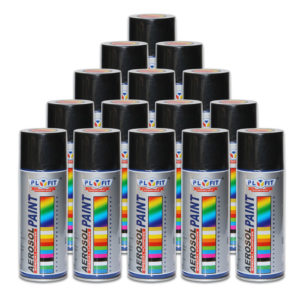What Are Common House Centipedes And How To Get Rid Of Them?

Flipping on the kitchen light to see a multi-legged insect beast scurrying across the floor is alarming at best. Fortunately, the pest isn’t going to attack you outright. It is likely a house centipede (Scutigera coleoptrata species).
They have an elongated body with 15 pairs of legs (less on juveniles). On the front are long antenna, while the rear legs are also long and mimic the appearance of the antenna. On average, the insect is usually no more than an 1 to 2 inches in length, although they can look much longer with the extended legs and antenna.
The following guide can help you better understand these pests and what you can do to control them in the home.
Problems to Watch For
Overall, centipedes are beneficial insects because they tend to eat more harmful bugs. They do not invade food stores, damage belongings, or leave behind waste products.
The main concern with these pests are their bites. All varieties of the insect have poison glands. Bites can be very painful and lead to swelling or irritation. Although they rarely have long-lasting effects, the bites are a real nuisance. This is especially true if you have children or pets in the home.
Their presence can also signify other issues in the home, such as a major pest insect infestation that they are feeding upon.
Common Attractants
Knowing what attracts these pests can help you prevent an infestations. The following is a list of things that make your home a welcome place for them:
- Ants, small spiders, silverfish, termites, and cockroaches, provide food for the multi-legged pests. If you have an infestation of any of the above, then you are making your home a welcome environment for their predators as well.
- Moisture also makes a welcome environment, since these pests like damp areas. Areas beneath the sink, such as if there is a leaking pipe, can be especially prone to the pests, as can damp basements.
- Outdoor conditions can also bring them indoors. If you have damp debris placed near the home, especially if it harbors food insects, you are welcoming the pests indoors.
- Gaps and cracks in the foundation, siding, or weatherstripping can also give the pests entrance into yourhome.
Remove the Attractants
Your first goal is to minimize the attractants in and around your home. Failure to do so means that any pesticide treatment is temporary at best, since the pests will be back if the food source returns. The four key areas to target are the following:
- The Kitchen – This room often harbors food crumbs that attract ants and other food source pests. Package pantry items in impenetrable containers to keep pests out. Rinse or wash dishes immediately. Sweep the floors daily and wipe down counters after each use so that pests won’t be attracted to feed here. The same goes for the areas where you normally eat, such as the dining room or living area.
- The Basement – Damp is what often attracts the pests to this area. Waterproofing your basement can help prevent damp, but it won’t get rid of it completely. Using a dehumidfier in the room can help the most. Also, seal up anything that can hold on to dampness, such as books and papers, in moisture-proof plastic containers.
- Exterior Gaps and Cracks – There will be less pests if they simply can’t get in. Begin by sealing up any obvious gaps or cracks in your foundation and siding with caulk. Replace any worn or missing weatherstripping around doors and windows. Also, check around exterior vents to make sure that screen is installed in the vent to keep pests out.
- Outdoor debris – Dead leaves, wood piles, or plants growing simply too closely to the house can all attract these pests to live near your foundation, which means that they can easily migrate indoors to follow shelter or food. Rake up leaves and debris and dispose of it. Place wood piles well away from your home. And finally, make sure bushes and plants are pruned back so there is a gap between them and your house.
Professional Treatment Advice
Although it’s possible to cut down on pests with the above advice, a major infestation often requires professional pesticide treatments. In this case, an integrated approach is best.
Begin by cleaning up and making your house as unattractive to the pests as possible. Then, have your home treated by an exterminator. The exterminator will use treatments designed to both destroy house centipedes and to get rid of their most common food sources. This integrated approach will result in making your home very unattractive to the pests.
If you are concerned about pesticides because you have young children or pets, then a dust may be used. This generally consists of boric acid or diatomaceous earth powders that are applied in crawlspaces, inside cabinets, or even behind baseboards – areas where the pests are likely to encounter the insecticide but where these low-risk insecticides won’t come into contact with people or pets.
By understanding the centipede and the steps necessary to keep it out of your home, you won’t need to worry about stumbling across these insects of horror movie proportions anymore.
Non Toxic Spray

This non-toxic spray kills larvae, eggs, and adult insects by breaking down their exoskeleton. It is safe to spray around the home and works only on the insects. Feel good about spraying indoors around pets, plants and children.
All Natural Non Toxic Insect Killer Spray by Killer Green
